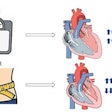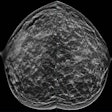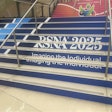CHICAGO - Researchers from the Glasgow Royal Infirmary in Scotland found the high level of disagreement between the findings of duplex ultrasound (DUS) and MR angiography (MRA) can be mostly attributed to the limitations of duplex ultrasound in visualizing calcified vessels or difficult anatomy.
Dr. Ed Kalkman, presenting his colleague’s findings to attendees of the RSNA scientific assembly said, “The duplex diagnosis of internal carotid artery (ICA) occlusion is particularly problematic even without apparent technical difficulty.”
The study was conducted over a two-year period on 835 patients with symptoms suggestive of stenotic ICA disease. All the patients underwent carotid DUS, and 86 subsequently had MRA performed as part of a pre-operative evaluation protocol (borderline or difficult duplex, surgical grade disease, or ICA occlusion).
Experienced operators using ATL HDI 5000 or 3000 ultrasound scanners and 7Mhz linear probes performed the carotid DUS. The MRA was performed on a Philips Gyroscan ACS NT (1.5 tesla) MRI scanner with enhanced gradients using both 2D time-of-flight and 3D gadolinium-enhanced MRA in a local neck coil.
A consulting radiologist with expertise in MRA analyzed the source images as well as maximum intensity projection (MIP) reconstructions. Results were grouped according to agreement between modalities. In 46 of the 86 patients (54%), DUS and MRA were concordant. In 40 of 86 patients, findings of the modalities were discordant. The discordant group was then analyzed further to determine the reasons for differences in agreement.
In 22 patients in the discordant group (56%) the ultrasound examination was thought by researchers to be suboptimal due to factors such as high carotid bifurcations, tortuous anatomy and vascular calcifications. The ultrasound diagnosis of ICA occlusion (absent signal on interrogation with color, pulsed wave and power Doppler) was particularly problematic as it could only be confirmed in 16 of 22 cases (76%).
In the other six patients (24%), MRA revealed stenosis rather than occlusion despite a technically adequate DUS in three patients. In 10 patients, DUS found a non-surgical grade stenosis that was shown as surgical grade on MRA. In 8 of these 10 patients, the duplex was felt to be technically suboptimal. One patient among the 10 went on to undergo carotid endarterectomy.
According to researchers, the pitfalls of DUS are threefold: anatomical (high-bifurcation and tortuous arteries), calcified plaques, and very slow flow. Kalkman added that, “DUS alone cannot be relied upon in the setting of difficult anatomy, heavy calcification or apparent occlusion and correlative imaging is required, for which MRA is well validated and safe.”
By Jonathan S. Batchelor
AuntMinnie.com staff writer
November 27, 2000
Dr. Ed Kalkman, presenting his colleague’s findings to attendees of the RSNA scientific assembly said, “The duplex diagnosis of internal carotid artery (ICA) occlusion is particularly problematic even without apparent technical difficulty.”
The study was conducted over a two-year period on 835 patients with symptoms suggestive of stenotic ICA disease. All the patients underwent carotid DUS, and 86 subsequently had MRA performed as part of a pre-operative evaluation protocol (borderline or difficult duplex, surgical grade disease, or ICA occlusion).
Experienced operators using ATL HDI 5000 or 3000 ultrasound scanners and 7Mhz linear probes performed the carotid DUS. The MRA was performed on a Philips Gyroscan ACS NT (1.5 tesla) MRI scanner with enhanced gradients using both 2D time-of-flight and 3D gadolinium-enhanced MRA in a local neck coil.
A consulting radiologist with expertise in MRA analyzed the source images as well as maximum intensity projection (MIP) reconstructions. Results were grouped according to agreement between modalities. In 46 of the 86 patients (54%), DUS and MRA were concordant. In 40 of 86 patients, findings of the modalities were discordant. The discordant group was then analyzed further to determine the reasons for differences in agreement.
In 22 patients in the discordant group (56%) the ultrasound examination was thought by researchers to be suboptimal due to factors such as high carotid bifurcations, tortuous anatomy and vascular calcifications. The ultrasound diagnosis of ICA occlusion (absent signal on interrogation with color, pulsed wave and power Doppler) was particularly problematic as it could only be confirmed in 16 of 22 cases (76%).
In the other six patients (24%), MRA revealed stenosis rather than occlusion despite a technically adequate DUS in three patients. In 10 patients, DUS found a non-surgical grade stenosis that was shown as surgical grade on MRA. In 8 of these 10 patients, the duplex was felt to be technically suboptimal. One patient among the 10 went on to undergo carotid endarterectomy.
According to researchers, the pitfalls of DUS are threefold: anatomical (high-bifurcation and tortuous arteries), calcified plaques, and very slow flow. Kalkman added that, “DUS alone cannot be relied upon in the setting of difficult anatomy, heavy calcification or apparent occlusion and correlative imaging is required, for which MRA is well validated and safe.”
By Jonathan S. Batchelor
AuntMinnie.com staff writer
November 27, 2000
Related RSNA Reading
MR angiography, duplex ultrasound, and DSA in carotid artery stenosis, November 26, 2000
Copyright © 2000 AuntMinnie.com
Click here to view the rest of AuntMinnie’s coverage of the 2000 RSNA conference.
Post your comments about this story.



















